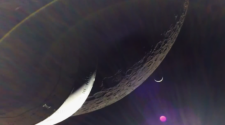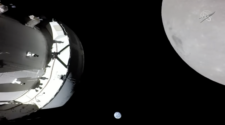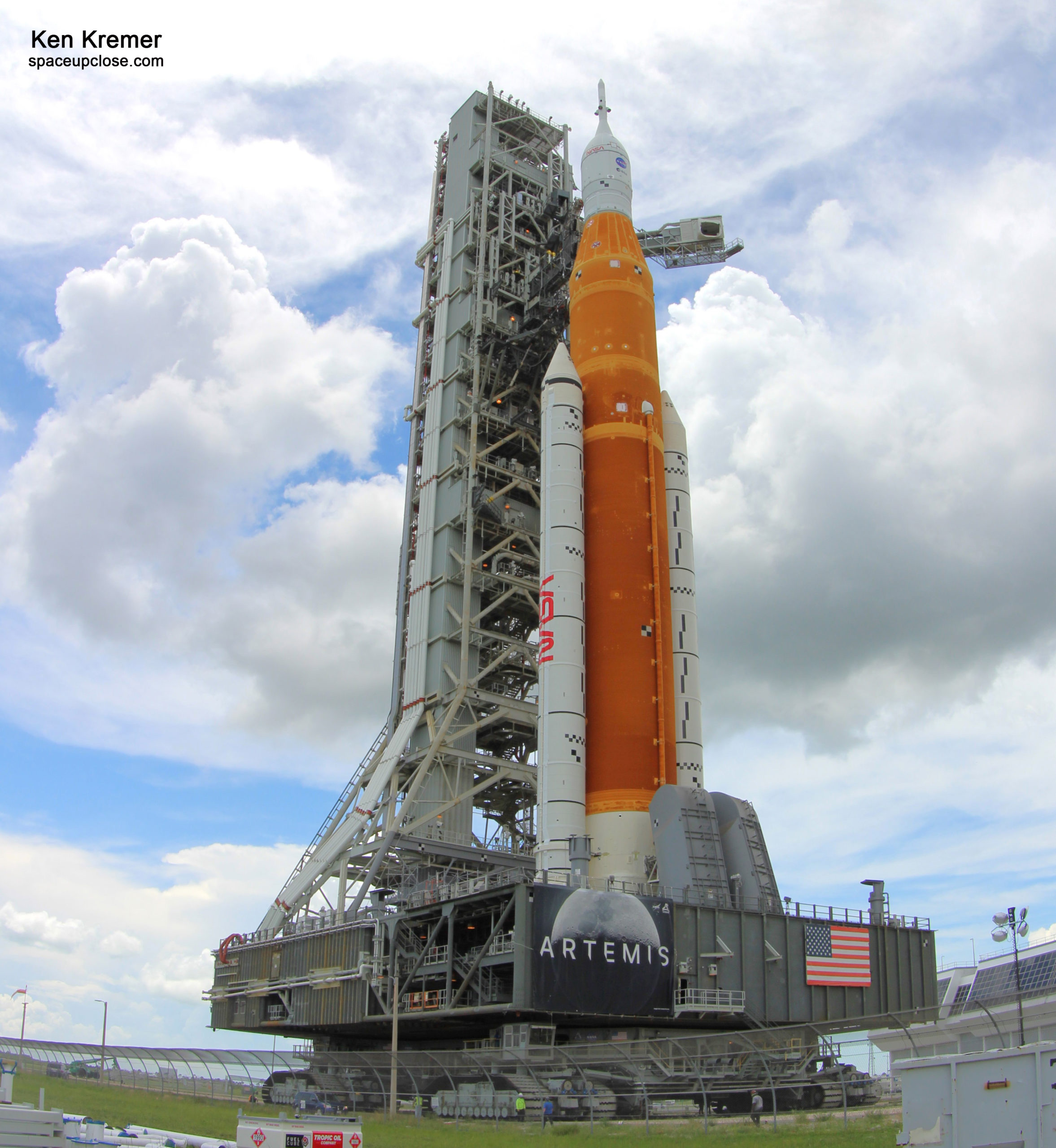
August 29 has been selected by NASA as the launch date for the maiden flight of the Space Launch System (SLS) lunar rocket on the Artemis 1 unpiloted test flight from Kennedy Space Center (KSC) in Florida.
NASA officials earlier determined that the fourth Wet Dress Rehearsal (WDR) Tanking Test conducted on June 20 was sufficiently successful to declare completion of the practice countdown and cryogenic fueling test campaign objectives despite a new hydrogen leak detected in the Artemis 1 rocket stack. Doing so cleared the path to move forward with setting the launch date of NET Aug. 29.
Work is underway to complete repairs on the hydrogen leak discovered during the last WDR cryogenic tanking test. Additional tests and preparations continue for NASA’s 32-story-tall SLS rocket that is already integrated with the Orion human-rated deep space capsule.
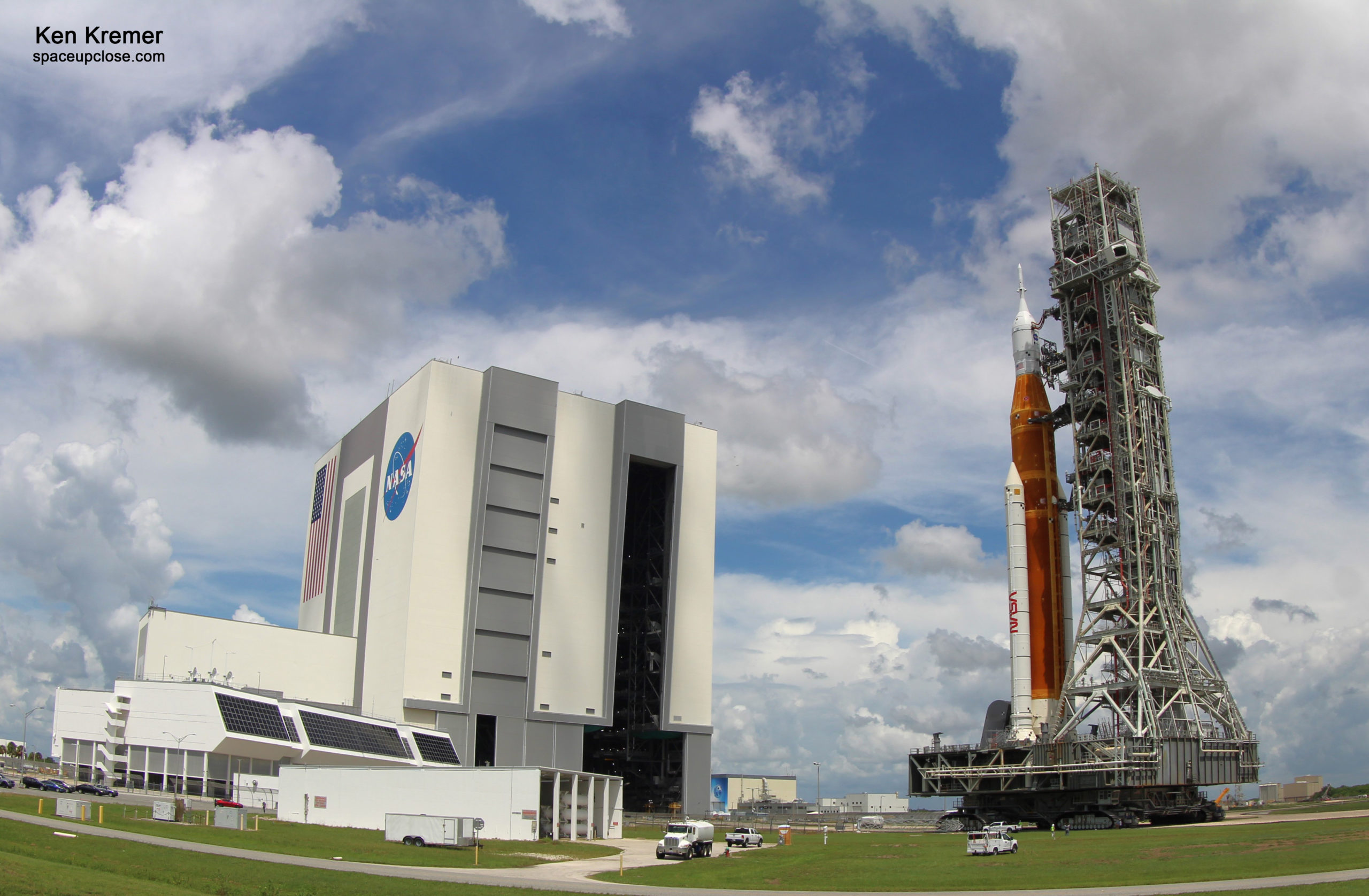
The official launch date was announced after an official launch review of all systems. The two-week launch window period runs from Aug. 23 through September 6, however, NASA has only selected possible launch dates during the second half of the window.
For an SLS launch on Aug. 29, the window opens at 8:38 a.m. EDT and runs for two hours until 10:38 a.m. EDT.
NASA teams have identified and reserved two other launch dates on the Eastern Range as placeholder dates for backup launch opportunities: Sept. 2 at 12:48 p.m. (two-hour window), and Sept. 5, at 5:12 p.m. EDT (90-minute window).
These dates are only possible if all goes well with final preparations, said Jim Free, NASA’s associate administrator of exploration systems, at a media briefing for reporters. “Those are dates just like other missions hold, so it’s not an agency commitment,” he said. “We’ll make the agency commitment at the flight readiness review, just a little over a week before launch. But these are the dates that the team is working to.”
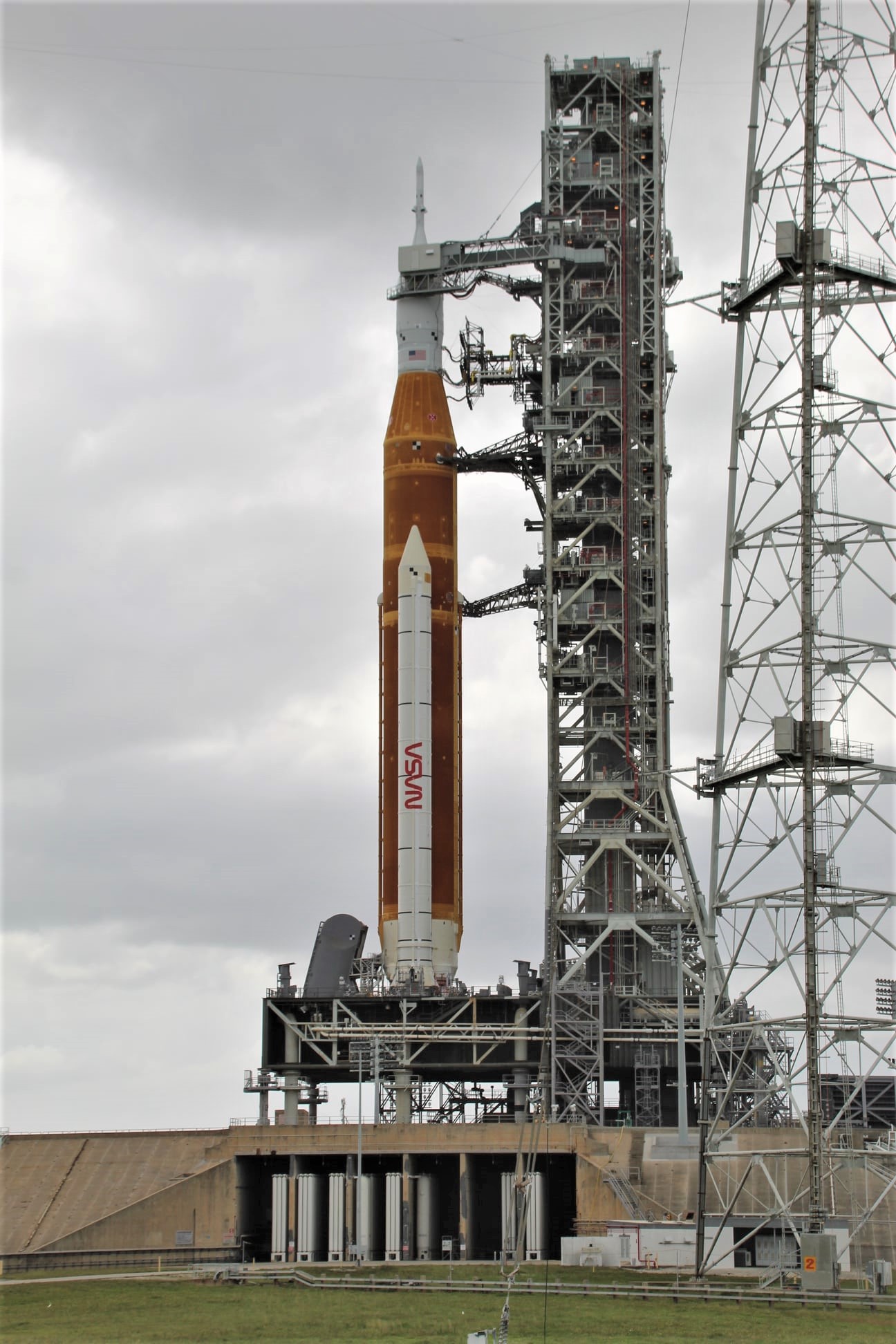
An SLS launch on any of these three dates will enable a ‘long-class’ Orion mission of 39 to 42 days to the Moon and back to give the spacecraft the best workout possible before a crew of human astronauts fly aboard the Artemis 2 mission – now targeted for late 2024.
Artemis 1 will be uncrewed and is the first test flight in NASA’s Project Artemis program that is aiming to return humans to the Moon for the first time in five decades.
A flurry of activity is already in progress at KSC and other NASA Centers to enable the inaugural SLS launch as soon as possible. Teams are completing final repairs and testing, and accomplishing checkouts to ready the rocket for launch.
Technicians replaced seals on the disconnect of the tail service mast umbilical and are testing them to confirm there are no additional leaks. The work was made more difficult by the need to enter the engine section. The seals were replaced to address a hydrogen leak during the final wet dress rehearsal in June.
“During work to repair the source of a hydrogen leak, engineers identified a loose fitting on the inside wall of the rocket’s engine section, where the quick disconnect for the liquid hydrogen umbilical attaches. The component called a “collet” is a fist-sized ring that guides the quick disconnect during assembly operations. Teams will repair the collet by entering the engine section in parallel with other planned work for launch preparations. Technicians have replaced the seals on the quick disconnect of the tail service mast umbilical and will reattach the umbilical plate once the loose collet is addressed,” said NASA.

Engineers are also finishing the installation of the flight batteries. Teams have installed the batteries for the solid rocket boosters and interim cryogenic propulsion stage, followed by the core stage batteries. They are also installing the flight termination system (FTS).
If all goes well, the integrated SLS/Orion stack will then roll back out for the third time to pad 39B. The Apollo-era crawler-transporter-2 (CT-2) moves at a top speed of about 0.8 mph (1.3 kph), taking approximately 10 hours to make the 4.2-mile trek down the rocky path. After SLS reaches the launch complex, the team needs 10 to 14 days for pad preparations.
However, the FTS is only verified for 20 days starting from the VAB rollout day. It is limited due to battery lifetime After 20 days the entire stack has to roll back to the VAB for battery replacement – thus requiring another month of delays for the trip back and forth.
The space agency can attempt three launch attempts within seven days out at the pad – which would conclude on Sept. 6 for Launch Period 25. The next possible launch period won’t open until Sept. 19.

